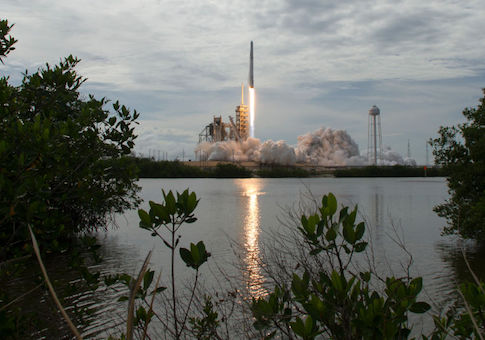The Pentagon will remain dependent on Russian rocket engines to launch military satellites into space through at least the mid-2020s, despite the U.S. government allocating billions of dollars to defense contractors to produce an American-made replacement.
The projection adds several years to initial targets laid out in 2014 by lawmakers and senior Air Force officials, who ordered the United States begin phasing out Russia's RD-180 engines amid national security concerns spurred by the Kremlin's annexation of Crimea.
Senior Air Force and Pentagon officials initially predicted the United States would switch to all-domestic rocket engines as early as 2020, but industry officials now say the military won't move fully to American-built engines until at least 2024, with some estimating reliance on Russian-made parts through 2028, the Wall Street Journal reported.
At issue is United Launch Alliance (ULA), a joint venture between Boeing and Lockheed Martin that is contracted by the military to launch top-secret satellites into orbit. Though ULA is in the process of developing a new engine that uses only American parts, it still relies entirely on Russian RD-180 engines to launch its Atlas V rocket.
Since 2015, the Air Force has awarded more than $4 billion to ULA to build a replacement engine, shelling out an additional $420 million per test launch despite ongoing delays due to funding and technical challenges.
Entrepreneur Elon Musk's SpaceX, the only other company authorized to conduct national security space launches for the government, manufactures its Falcon 9 rockets using only American parts. Though the cost to launch the Falcon 9 starts at less than $83 million for the military, more than 40 percent below average ULA launches, the engine is unreliable compared to the RD-180s.
Unlike ULA, which has a 100 percent success rate in launching satellites to all eight orbits used by the military, SpaceX is only approved to operate in four of the eight orbits. Additionally, the Falcon 9 engines aren't as powerful as Russia's RD-180s, nor do they enjoy a perfect launch record like the ULA vehicles.
SpaceX is expected to launch a larger version of its Falcon 9 rocket, called the Falcon Heavy, in late 2017, but the sheer number of engines (27) required to launch the vehicle has raised several structural issues. Musk is now racing against ULA and Amazon Chief Executive Jeff Bezos's Blue Origin startup to develop cheaper, more proficient rockets using only American-built engines.
Sen. John McCain (R., Ariz.), chairman of the Senate Armed Services Committee, spearheaded an effort to ban the Pentagon's use of Russian engines to carry military satellites into space, but lawmakers last year eased the restrictions to allow the engines for six more years until reliable domestic alternatives become available.
Congress soon after approved the purchase of 18 more RD-180 engines in its annual National Defense Authorization Act. The move dispensed at least $540 million to a Russian manufacturing company and effectively rewarded the Kremlin's "worldwide menace," according to the Center for Individual Freedom.
Citing unnamed industry officials, the Wall Street Journal reported the Pentagon is now preparing for an engine shortage and will likely have to purchase more Russian RD-180s in the coming year.
